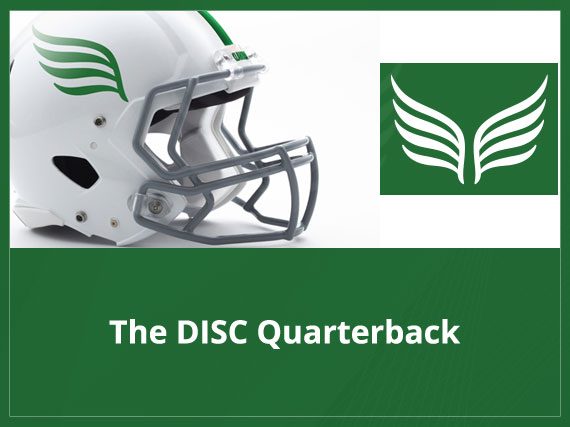2015 in Review: Year of the Personality
As 2015 has recently come to a close, our Facebook feeds are full of links to Top Ten lists and think pieces ruminating on the biggest buzzwords and trends of



Blog -The DISC Quarterback
We have an enough to think about in our hectic, fast-paced world. Pondering which DISC style to apply in a given situation or with a specific person shouldn’t be one of them. So how can the DISC styles be used on a daily basis without thinking about them? The key is learn them so well that they become internalized. Once accessing and applying the styles becomes automatic, they will be the key to transforming every one of our relationships, turning managers into leaders, building effective teams, improving sales for salespeople, enhancing customer service, and driving individual and organizational success.
When a quarterback throws a football in a game, he doesn’t think, “Interlace my fingers between the laces and seams. Pull my throwing arm back with a bent elbow. Extend my free arm forward for balance and point this arm at the target. Keep my shoulders level for a short pass or dip my throwing arm’s shoulder for a long pass…”
The quarterback has practiced throwing the football so many times, when he gets into a game, it happens naturally. It’s all about repetition. The key, then, is to place the DISC styles into muscle memory. Just as the quarterback has placed the art of throwing the ball into his adaptive unconscious, the place where patterned skills go to background and take place on autopilot, we all can benefit from learning the DISC styles so well that they happen unconsciously as well.
So how, then, does one place the DISC styles into muscle memory, so that they are applied without thought? Practice and linking.
To practice applying the DISC styles:
1. Learn by teaching. Teach the DISC styles to a spouse, friend, or coworker (and don’t forget about the kids).
2. Determine the DISC styles of your family members and friends. The DISC styles are all around you…find them! – Identify the styles of your family and friends.
3. Identify the styles of fictional characters. Turn watching TV and movies and reading novels into style practice time
Think of the brain as a filing cabinet. Linking the DISC styles to different situations is like filing the DISC model into many different folders so that the DISC styles are automatically accessed and applied under any circumstance.
Consider how each style:
· Listens (What do they listen for?)
· Manages conflict (Are they more likely to be fight or flight?)
· Deals with stress (Do they internalize or externalize stress?)
· Accepts delegated tasks (Do they like freedom or structure?)
· Takes risks (Do they think or act first?)
· Manages their time (How do they manage their priorities?)
· Gets motivated (What motivates each style?)
· Desires feedback (What kind of feedback do they like?)
Before long, you will begin to see the DISC styles everywhere you go. It’s like a light that once turned on, illuminates every interaction in a brand new way.
Please confirm you want to block this member.
You will no longer be able to:
Please allow a few minutes for this process to complete.